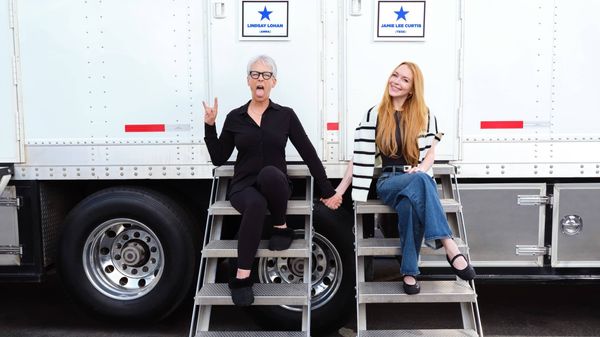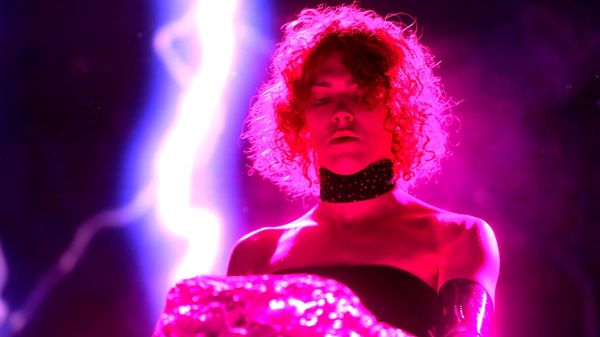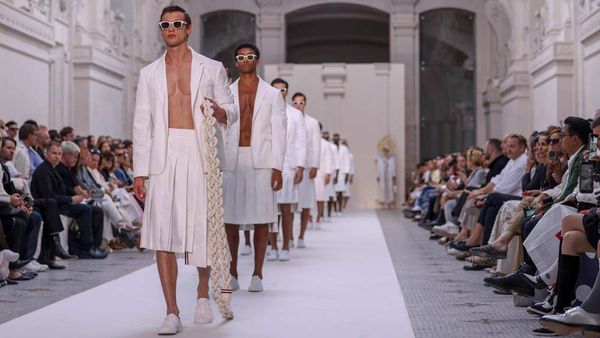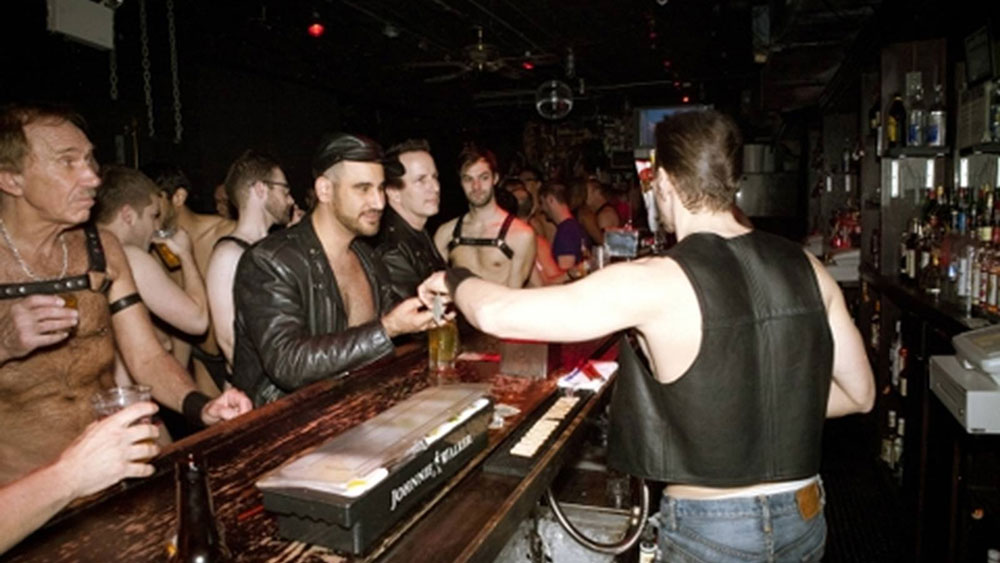
May 28
Is Queer Nightlife Dying? No, Says Queer Author in New Book. Just Evolving
Kilian Melloy READ TIME: 7 MIN.
Gay bars are closing at a rapid clip and queer nightlife is on the verge of guttering out.
Or is it?
Chicago native, Princeton postdoc, Professor of Sociology and Canada Research Chair in Sexuality and Urban Studies at the University of British Columbia, and Lambda Literary finalist Amin Ghaziani takes us on an elucidating, illuminating, and fun trawl through London's vital scene of pop-up events and inclusive LGTBQ+ clubs in his new book "Long Live Queer Nightlife," an up-close survey of a cultural scene that seems anything but moribund.
What it is not, however, is the old-school gay bar scene, dominated by white gay men. Instead, the spaces Ghaziani explores, and the people who serve as his guides to these spaces, are centered on other colors of the rainbow in sexual and gender, as well as racial, terms.
Among the book's many revelations are how some cities – London, Berlin, Amsterdam – have woken up to the fact that queer nightlife is a major economic as well as cultural engine, with "nightlife czars" actively seeking ways to promote and preserve the queer nightlife scenes in their localities.
Ghaziani also pulls the wool off our eyes when it comes to why, exactly, queer nightlife can't seem to thrive. Has assimilation, the dissolution of traditional gayborhoods, and the convenience of hookup apps made queer nightlife obsolete?
Not at all. Indeed, Ghaziani notes, the problem for establishments catering to queer nightlife – gay bars among them – isn't that no one is showing up, but that the economics of urban space and the pressures of capitalism, seeking to maximize the profits from every square foot of commercial space, tend to push queer establishments out of their longtime homes and to the margins. But the LGBTQ+ community is nothing if not inventive, and the human love of community (and of partying) is endlessly adaptable. Ghaziani details emerging alternatives to the gay bar and sketches a portrait of queer nightlife undergoing both an evolution and a renaissance.
EDGE caught up with Amin Ghaziani to discuss his new book, the state of queer nightlife, and where our community is headed... and congregating... from here.

EDGE: You make a case for how queer nightlife is an engine, economically and culturally, but what about other ways queer nightlife fits into the broader culture?
Amin Ghaziani: It is not at all a coincidence or an accident that these underground parties are becoming more visible and varietal at precisely the same time that we see a global circulation of Black Lives Matter movements, conversations about missing and murdered Indigenous women in Canada, conversations about the accountability for missing Indigenous children at residential schools. Part of what this tells us is that there is a shared sensibility to reorient conversations in ways that enable the subaltern to speak. Groups that historically have been neglected, overlooked, or marginalized, even within already-marginalized communities, have always found ways to empower themselves and have their voices heard.
EDGE: You make an interesting point in noting that when we talk about a "closure epidemic" of gay nightlife spaces, we default automatically to the idea of gay bars as the entirety of queer nightlife – which they are not. What you reveal is that queer nightlife is not, despite the panicky rhetoric, going extinct.
Amin Ghaziani: Part of what I found frustrating before I began this book is how repeatedly public discourse made two conflations: Gay bars as synonymous with the entirety of nightlife; and second, that gay bars are broadly inclusive of all LGBTQ+ individuals, that they presumably are safer spaces or inclusive cultural spaces for all of us. That's aspirational, because it has not been the application over the decades. What I'm trying to do is think about both of those things. So, gay bars are not the sum total of nightlife. That's right.
But, I do not want anyone to mistake this book as an attack against gay bars. I love gay bars, I've attended gay bars for the better part of my adult life, and I intend to continue to do so for the rest of my life. But gay bars are only one expression of a multifaceted field of nightlife. I want to provide representation for other forms of nightlife in order to think critically and comprehensively about the different ways in which we come together, seek fellowship, and feel a sense of belonging.
That brings me to a second point: In many cities around the world, gay bars were, and still are today, a radical invention. No matter how much better things become, no matter that our sex is decriminalized, or our relationships are legally recognized – or at least some expressions of our relationships – knowing that there's a door that you can walk through, where you feel fully expressed and surrounded by other people who are like you, is a source of unending power.
Historically, that power derived from the gay bar providing refuge from the wider homophobic world. But today, there are groups of people who feel like they need a refuge from the refuge. One study found that 80% of queer black respondents, 79% of queer Asian respondents, and 75% of queer South Asian respondents reported experiencing racial bias from within LGBTQ+ communities.
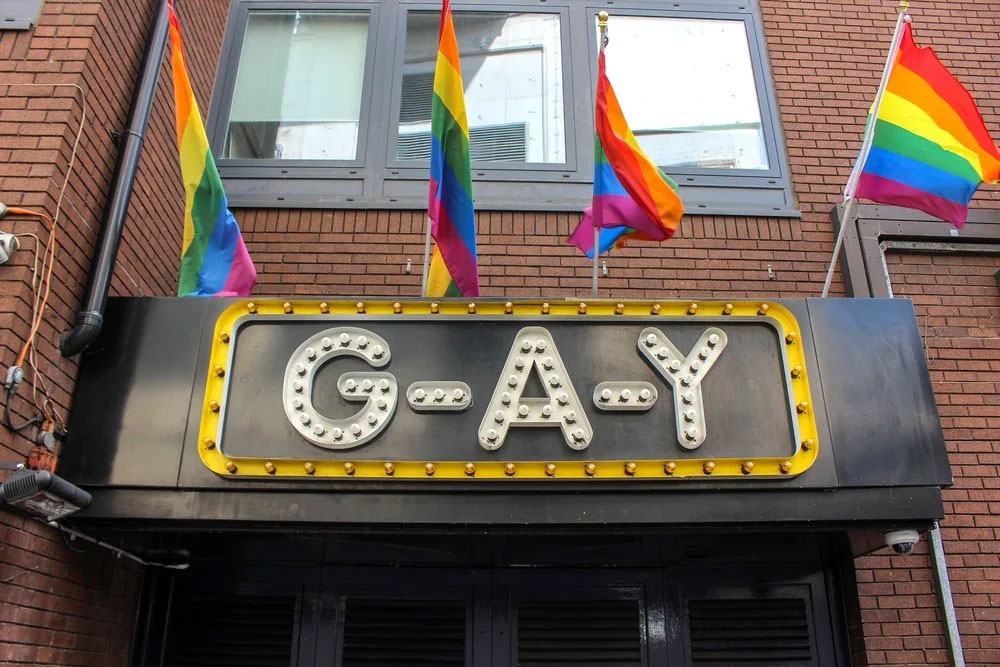
EDGE: You point out that the square foot value of a gay club can't maximize profits the way that a luxury condo can. But different kinds of nightlife can flourish in what you call "the cracks in capitalism."
Amin Ghaziani: One difference between gay bars and club nights is in their format. We're seeing a transition or transformation from fixed-in-place bars to episodic and event-based formats. That change enables economic experiments. Club night organizers operate using a model called "crack capitalism." The idea here is to refuse to think about capitalism as exclusively a system of domination, but also to exploit its structural weaknesses.
We need to keep in mind that gay bars are essentially small businesses. They might be commercially viable, but from the perspective of a developer they are not maximally profitable. This is where we get a lot of tension between misattributions of declining demand – that the bar is not making enough money to stay afloat, which is not true – versus maximum profitability, which sometimes sounds a lot like greed.
What a lot of club event organizers have figured out is that they can partner with a developer to throw events in that space for low cost, or sometimes at no cost. From the developer's point of view, it's better to have people congregating in a misused or disused space than to leave it empty. It's a macro-economic intervention that enables nightlife to survive even when capitalism tries to crush the viability of these places. But there are also micro-economic policies, like tiered ticketing practices and pay-it-forward tickets.
EDGE: If we didn't have those economic pressures, would we still be seeing this shift happen thanks to younger queer people looking for different ways to come together and create joyous spaces?
Amin Ghaziani: That's a tricky question. Economic factors are part of it, but they're not the only factor. The closure of gay bars is a disruptive event that is enabling club nights to emerge with greater visibility and variety. I very intentionally avoid using the word "cause," because that's difficult thing to establish.
I think absent the economic pressures, club nights would still exist because there are a number of examples in history of alternate forms of fellowship, belonging, and gathering that center different groups existing alongside more mainstream establishments. We have done it before, and will continue today and into tomorrow. But it's the economic pressures combined with institutional closures that are triggering a broader conversation beyond the bars.
EDGE: Your fieldwork must have been an awful lot of fun.
Amin Ghaziani: The book is not a memoir or a travel guide. It's based on 112 interviews, observations at numerous club nights over the course of three years, and reviewing dozens of municipal reports. I wrote it intentionally to be accessible, public-facing, and, at times, quite personal. I hope it shows that research doesn't require gatekeeping so that only certain kinds of people can access a book.
A lot of people care about this issue, and I wanted to write in a way that invites as many people into the conversation as possible. And in that conversation, I want us to insist on joy. And, in fact, there is a joy-centric tone in my book. When we go out and have fun with our friends, important things are happening. Those moments together create a shared emotional energy. Joy is life enhancing, it's life affirming, and it's deeply political. Those moments together are powerful, and I wanted to make sure that anyone who opens my book very clearly recognizes the combined power of intellect and joy in its pages.
"Long Live Queer Nightlife" is out now in hardcover from Princeton University Press.
Kilian Melloy serves as EDGE Media Network's Associate Arts Editor and Staff Contributor. His professional memberships include the National Lesbian & Gay Journalists Association, the Boston Online Film Critics Association, The Gay and Lesbian Entertainment Critics Association, and the Boston Theater Critics Association's Elliot Norton Awards Committee.




